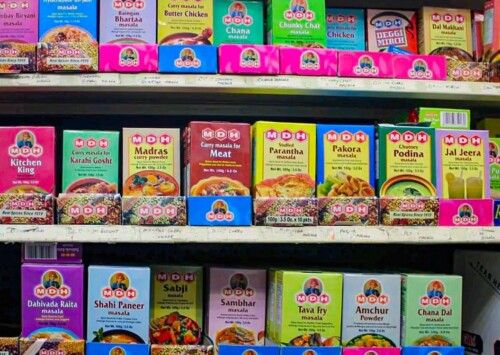Ice Cream or Frozen Dessert: Understanding the Difference
Ice creams and frozen desserts are both delicious treats, but there are important differences between the two. Ice cream is typically made with cream, milk, sugar, and flavourings, while frozen desserts can contain non-dairy alternatives like soy or coconut milk. In India, frozen desserts cannot be marketed as ‘‘ice cream’’ unless they meet certain criteria set by the Food Safety Standards Authority of India (FSSAI) to prevent misleading consumers.
However, some companies like Kwality Walls have found ways to market their frozen desserts in a way that they resemble ice creams but without using the actual name. This has led to confusion among consumers who may not be aware of the differences between the two.
In addition to the confusion, there has been a controversy between Amul and Kwality Walls over the ingredients in their frozen treats. In an advertisement, Amul claimed their ice cream contained “real milk” while implying that others used vegetable oil instead of milk. This led to Kwality Walls filing a complaint with the Advertising Standards Council of India (ASCI), arguing that the ad was misleading.
Whether you prefer ice cream or a frozen dessert, it is important to understand the differences between the two to make an informed decision. And with the ongoing controversy between Amul and Kwality Walls, it is clear that not all frozen treats are created equal.
What is Ice Cream?
Ice cream is made from milk, cream, flowers, and sugar. The ingredients are combined and churned in an ice cream machine to create a smooth and creamy texture. The churning process also incorporates air into the mixture, which gives ice cream its light and fluffy texture.
One key factor that sets ice cream apart from other frozen desserts is the amount of milkfat it contains. According to the FSSAI, ice cream must contain at least 10 pc milkfat to be labelled as ice cream. Higher-end ice creams may contain up to 16 pc milk fat. The milkfat gives ice cream its rich and creamy texture and also contributes to its flavour.
What is Frozen Dessert?
The frozen dessert is a term used to describe any sweet, frozen confection that is not classified as ice cream. Unlike ice creams, frozen desserts are made with vegetable & palm oil, including milk, cream, and non-dairy alternatives.
One key difference between frozen dessert and ice cream is the amount of milkfat it contains. While ice cream must contain at least 10 pc milkfat, frozen desserts may contain little to no milkfat. Instead, it often contains vegetable oil or other stabilisers to create a creamy texture.
Is frozen dessert harmful to health?
It depends on the specific type of frozen dessert and the ingredients used to make it. Some frozen desserts, particularly those that are high in sugar and use palm oil or vegetable oil, can be harmful to health if consumed in excess. Consuming palm oil in excess can increase the risk of heart disease due to its high saturated fat content. However, when consumed in moderation as part of a balanced diet, it is generally considered safe and may even offer some health benefits.
But vegetable oils used in frozen desserts may contribute to inflammation and oxidative stress when consumed in large amounts, increasing the risk of health problems like heart disease and cancer.
Types of Frozen Desserts
There are several types of frozen desserts that fall under the category of frozen dessert. Here are some of the most popular ones:
Gelato: Gelato is a traditional Italian frozen dessert that is made from milk, sugar, and flavourings such as fruit, nuts, or chocolate. Gelato has a lower milkfat content than ice cream, which gives it a denser texture and a more intense flavour.
Sorbet: Sorbet is a frozen dessert that is made from fruit juice, sugar, and water. It contains no milk or cream, which makes it a great option for those who are lactose intolerant or vegan.
Sherbet: Sherbet is a frozen dessert that is made from fruit juice, sugar, and milk or cream. Sherbet has a lower milkfat content than ice cream, which gives it a lighter texture and a more refreshing flavour.
Frozen Yogurt: Frozen yogurt is a frozen dessert that is made from yogurt, sugar, and milk. It often contains less milkfat than ice cream and is marketed as a healthier alternative to traditional ice cream.
Key Differences between Ice Cream and Frozen Dessert
Milkfat content: Ice cream must contain at least 10 pc milkfat, while frozen desserts may contain little to no milkfat.
Texture: Ice cream is churned in an ice cream machine, which gives it a light and fluffy texture. Frozen desserts may contain stabilisers or vegetable oil to create a creamy texture.
Flavours: Ice cream typically comes in traditional flavours such as vanilla, chocolate, and strawberry. Frozen desserts can come in a variety of flavours, including fruit-based options.
Dietary restrictions: A frozen dessert is a great option for those with dietary restrictions, such as lactose intolerance or following a vegan diet. Sorbet and some gelato options are dairy-free, while frozen yogurt is lower in milkfat than traditional ice cream.










